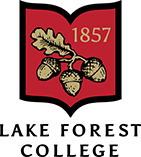 Most composite flowers are in bloom during the summer or even the fall. However, there are some species that bloom in the spring. One species in particular is the Golden Ragwort. The Golden Ragwort is a member of the Asteraceae, or Compositae, Family. Now referred to as Packera aurea, the previous scientific name for this species was Senecio aureus.
Most composite flowers are in bloom during the summer or even the fall. However, there are some species that bloom in the spring. One species in particular is the Golden Ragwort. The Golden Ragwort is a member of the Asteraceae, or Compositae, Family. Now referred to as Packera aurea, the previous scientific name for this species was Senecio aureus.
These bright golden native flowers certainly stand out. Blooming from May-July, it is one of the earliest blooming species of the Aster family. According to Illinois Wildflowers (the website), this perennial wildflower is 1/2-2’ tall with erect flowering stems. At the base, there is a rosette of basal leaves recorded to be 6-8” across, with the blades typically 2-3” long and 2” across. The basal leaves are glabrous, crenate along the margins, cordate (heart-shaped), with an orbicular to oval shape. Minnesota Wildflowers writes that mature basal leaves can become up to four inches long and wide on a single long stalk. While these heart-shaped basal leaves appear to be dark green at the surface, to the surprise of many it is purple beneath!
Distinguishing Characteristics:
The University of Nevada, Las Vegas has even recorded that within such a large family such as the Asteraceae, while it is easy to recognize the plants at the family level, it has become increasingly difficult for botanists to identify the plants to species. For example, while you may have assumed that the photograph directly above is the Golden Ragwort, it is actually the Prairie Ragwort (Packera plattensis)!
The main difference and the most distinguishing characteristic between the Golden Ragwort and other plants such as the Western Heart-leaved Groundsel (Packera pseudaurea), are with the basal leaves, as confirmed by Minnesota Wildflowers. It is also important to keep in mind that the flower clusters of the golden ragwort are almost identical to the Balsam Ragwort (Senecio pauperculus), which is also found in prairie fens. The distinguishing characteristic is that the basal leaves on the Balsam Ragwort are elongated with sharp teeth.

Medicinal Use:
WebMD reported that the Golden ragwort is a plant used to make medicine. In an article published by eFloras, they reported that many species of Asteraceae have been introduced into North America (majorly from Europe and Asia), with some being used deliberately for foods, horticulture, and even medicines. WebMD went on to state that the Golden Ragwort was used to treat diabetes, high blood pressure, water retention, bleeding, chest congestion, and spasms. In fact, Gordon Mitchell wrote that Native Americans and the pre-industrial European settlers used Golden Ragwort for medicine as well, especially the Cherokee and Iroquois.
Gordon Mitchell explains that the leaves and even the roots were made into a tea, liquor, or any other infusion. The above and below ground parts of the plant were both harvested and then used as an abortion drug, anti-hemmorrahic, a diaphoretic, a stimulant, a tonic, etc.
It was used for treating painful childbirth, broken bones, fever, kidney problems, heart-trouble, and female menstrual cramps. Mitchell writes that it was often used as a substitute for medicines derived from erot and was even listed in the National Formulary (An official publication, issued first by the American Pharmaceutical Association) from 1916-1936.

Resources:
“Asteraceae.” Asteraceae. University of Las Vegas, Nevada, n.d. Web. 04 June 2015. <https://faculty.unlv.edu/landau/asteraceae.htm>.
“Asteraceae”. Encyclopedia Britannica. Encyclopedia Britannica Online. Encyclopedia Britannica Inc., 2015. Web. 04 Jun. 2015 <http://www.britannica.com/EBchecked/topic/39698/Asteraceae>.
“Golden Ragwort (Packera Aurea).” Illinois Wildflowers. N.p., n.d. Web. 02 June 2015. <http://www.illinoiswildflowers.info/woodland/plants/gold_ragwort.htm>.
“Golden Ragwort: Uses, Side Effects, Interactions and Warnings.” WebMD. WebMD, n.d. Web. 03 June 2015. <http://www.webmd.com/vitamins-supplements/ingredientmono-669-golden%20ragwort.aspx?activeingredientid=669&activeingredientname=golden+ragwort>.

